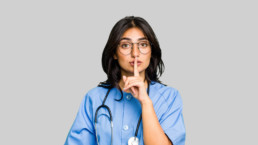Value Engineering in Healthcare Architecture & Design
Building a healthcare facility is a significant investment. While the desire to create a state-of-the-art environment is paramount, budgetary constraints are a reality. This is where Value Engineering (VE) comes in – a powerful approach that optimises project value by balancing function, quality, and safety within budget limitations.
Understanding Value Engineering:
VE is a systematic process that analyses projects to identify areas where value can be improved. In the context of healthcare construction, this translates to:
- Optimising cost-effectiveness: Identifying opportunities to reduce costs without compromising essential functionality or patient safety.
- Enhancing functionality means ensuring the design effectively meets the needs of patients, staff, and the specific healthcare services provided.
- Maintaining quality: Prioritizing high-quality materials and construction practices while exploring cost-effective alternatives.
Balancing for Success:
VE focuses on the fundamental equation of value:
Value = Function / Cost
The goal is to maximise the project’s value by ensuring the required functions are achieved at the lowest possible cost while maintaining quality and safety standards.
Enhancing Project Value While Reducing Costs:
Here’s how VE can benefit your healthcare construction project:
- Identifying cost-saving opportunities: VE analyses different design options, materials, and construction methods to find cost-effective solutions without sacrificing performance.
- Exploring value-added alternatives: VE considers alternative materials, equipment, or systems that may offer a better overall value proposition, considering both initial cost and long-term maintenance needs.
- Streamlining processes: VE can identify areas where construction processes can be streamlined, leading to reduced labour costs and faster project completion times.
Collaboration is Key:
The success of VE hinges on collaboration between various stakeholders:
- Architects: Their design expertise is crucial in identifying value engineering opportunities during the planning stages.
- Engineers: They provide technical insights and analyse alternative solutions for functionality and safety.
- Healthcare Professionals: Their understanding of specific healthcare requirements is vital for ensuring VE solutions meet functional needs.
This team can identify and implement VE strategies that optimise project value by working together, resulting in a cost-effective and well-designed healthcare facility.
Value Engineering in Action: Optimizing Healthcare Design
Here are two examples showcasing the power of Value Engineering (VE) in healthcare projects:
1: Streamlining Patient Room Design
Challenge: Imagine a new hospital wing planned for a growing city that aims to create high-comfort patient rooms. However, the initial design features elaborate built-in furniture and custom lighting systems, driving up construction costs.
VE Approach:
- Healthcare architects analysed patient room usage and identified opportunities to standardise furniture layouts. This allowed for modular, movable furniture easily reconfigured for different needs, eliminating expensive built-in units.
- Instead of custom lighting systems, they explored readily available, energy-efficient LED track lighting fixtures. These offered greater flexibility in positioning and dimming while still providing a comfortable and adaptable patient environment.
Results:
- The VE approach led to significant cost savings in construction and material costs for patient rooms.
- The standardised, modular furniture increased efficiency for cleaning and maintenance staff.
- The flexible lighting system allowed for better customisation of patient room lighting based on individual needs.
2: Rethinking Wayfinding and Patient Flow
Challenge: An existing hospital design included a complex and confusing wayfinding system, leading to patient frustration and staff inefficiencies.
VE Approach:
- The healthcare facility design team collaborated with staff and patients to understand the challenges with navigation.
- Instead of costly renovations to redesign hallways, VE explored implementing a digital wayfinding system with interactive kiosks strategically placed throughout the hospital.
- They also proposed reviewing patient flow patterns, suggesting adjustments to waiting areas, and scheduling appointments to streamline patient movement within the facility.
Results:
- The digital wayfinding system offered a cost-effective solution to improve navigation for patients and visitors, eliminating the need for significant structural changes.
- Optimising patient flow patterns reduced patient wait times and staff workload, improving patient satisfaction and productivity.
- The VE process also identified opportunities for future expansion by maximising the use of existing space within the hospital.
These examples demonstrate how VE can lead to innovative solutions that deliver cost savings and functional benefits for healthcare facility design projects.
Conclusion:
Value engineering is not about cutting corners; it’s about achieving the best possible healthcare facility within budget constraints. By embracing VE principles, hospitals can ensure their facilities are functional, high-quality, and cost-effective, ultimately leading to better patient care and improved healthcare delivery.
Related Posts
Fireproofing in Healthcare Design
Designing healthcare facilities isn't just about aesthetics—it's about ensuring the safety and…
5 Essential Elements of Healthcare Design in 2022
Design makes a significant impact on the delivery of care for both healthcare providers and…
The Role of Acoustics in Healthcare Facility Design
Sound matters in healthcare design. From optimizing acoustics to ensuring patient tranquillity, the…
Navigational Design in Hospitals
Navigating a healthcare centre can be an overwhelming experience for patients and visitors alike.…
Top 5 Trends in Healthcare Design
Design can make all the difference when it comes to improving patient care. From a patient’s point…
Ergonomics in Healthcare Design
Healthcare design is critical to creating safe and efficient healthcare spaces. Incorporating…






